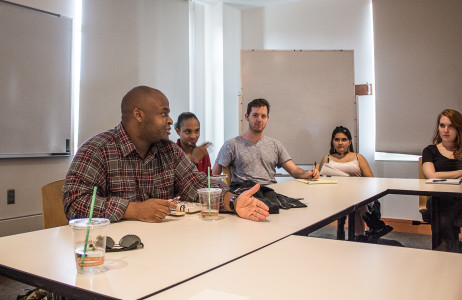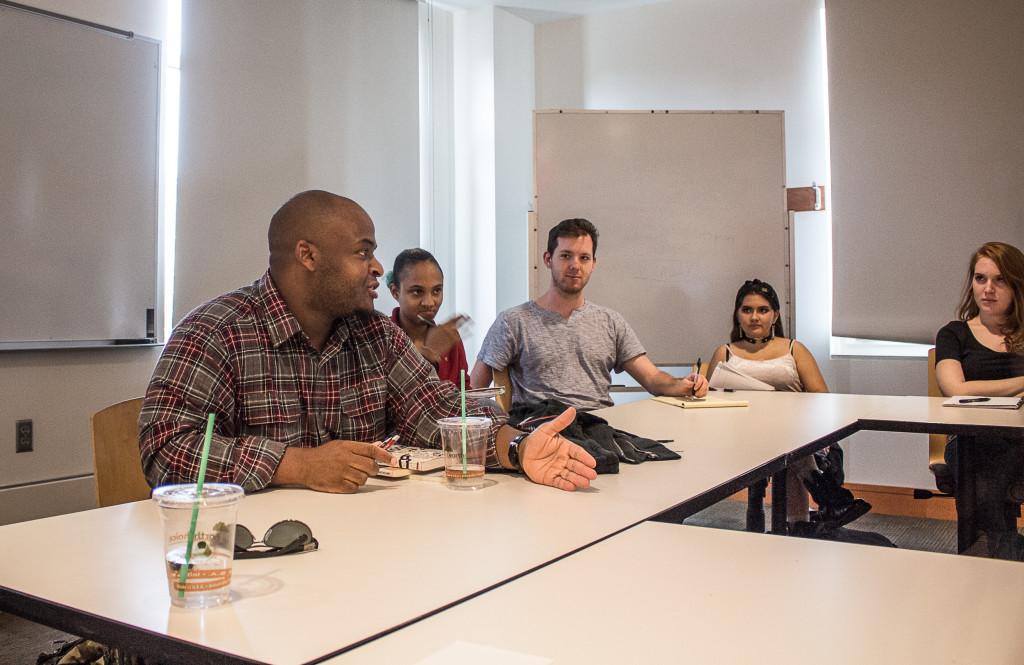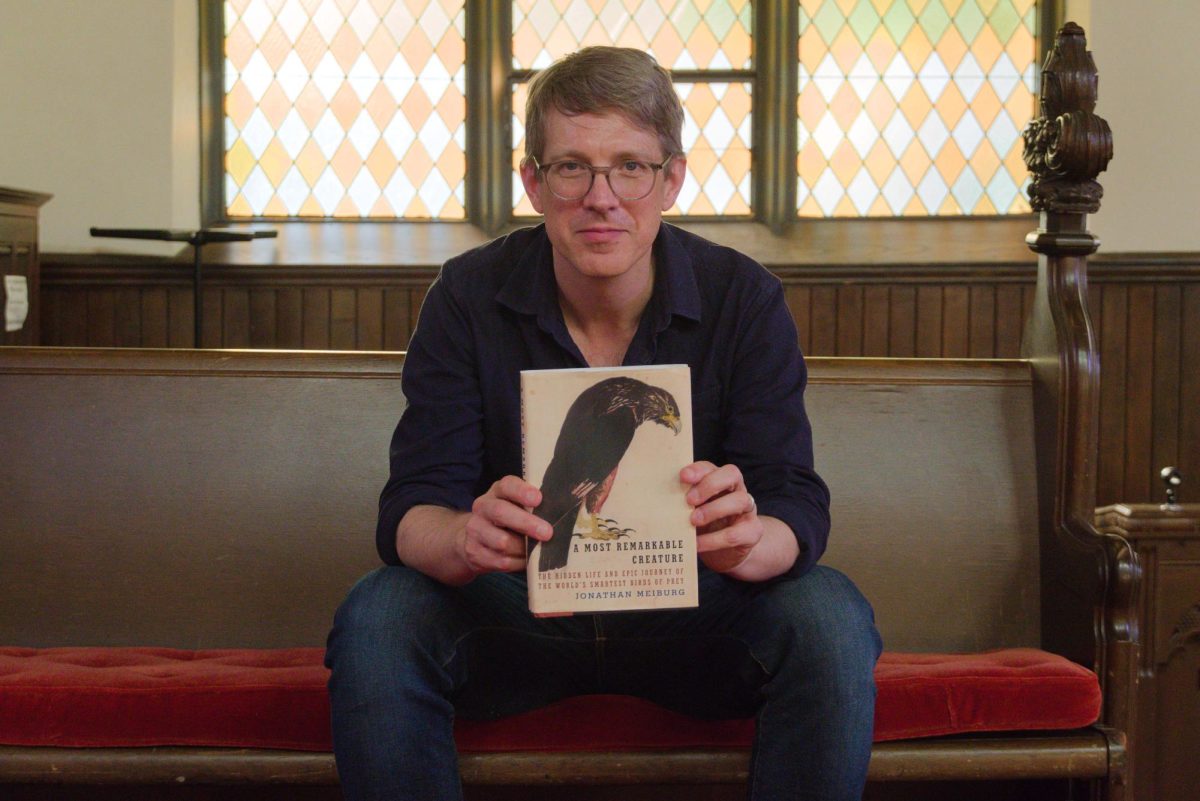The S&B’s Arts Editor, Susanne Bushman ’16 sat down author Kiese Laymon, with the Writers@Grinnell series, to discuss his published work and his upcoming memoir, which he read from at the reading.

Kiese Laymon led candid discussions surrounding writing and racial politics during a round table and after his evening reading. Photo by Minh Tran
SB: You write both fiction and non-fiction, do you have a preference for either genre?
KL: Fiction is a lot harder for me because the audience is not immediate. A lot of the essays I write are online so in some ways it’s easier to write nonfiction than fiction because of the audience—who knows if anyone will read your story or novel—but with essays I’m pretty sure people are going to read it immediately.
What’s the creative process like with your essays? How do you know when you’ve found something you want to write about? How do you get past feeling vulnerable about the subject?
I never get past feeling vulnerable about it, but I just write. I write two hours before I go to bed and two hours when I wake up. I just create a whole lot of material and every so often I revise some of it into decent shape and show people. You know what I mean? That’s it. I never stop feeling vulnerable about it at any point in the process.
Your novel, “Long Division,” like your non-fiction work, focuses a lot on racial politics. How do you strike a balance between those personal/political issues and the plot and fictional elements?
That’s a good question. … In novels in 2015, I think we don’t take plot seriously enough. For me, I’m thinking about how the causal relationships between scenes and characters are impacted by the larger structural things. If I’m writing a book about a boy who falls in love with a girl and is ultimately going to get his heart broken, I want to talk about different structures that impact their lives but make it so it feels still organic and fictional and not sociological. But plot and character in some way have to come first.
In your book, “How to Slowly Kill Yourself and Others in America,” you talk pretty openly about having editors try to encourage you to change the shape that your books were taking and leaving behind a book deal. What made you decide to come out about that process?
I just felt like I was keeping a secret for the longest time and I felt like, when I started to talk to other people, to other writers, the publishing industry is grimy and really terrible to a lot of people. I wanted to talk about how I let their treatment of me impact my treatment of other people and myself. I just needed to get it out so I could own it and work through it, and also share it with other young writers who might be going through the same thing so they would know that they’re not alone.
Your work looks a lot at your family, and especially the women in your family, and issues surrounding masculinity. How did you get started looking at those issues and why are they so important to you?
I grew up with my mother and my grandmother and my aunt. I was an only child so I had to listen a lot because my grandmother and my mom would be like “Ki, be quiet. Go over there and listen.” So, when I started to remember my life growing up, I remember their lives, right? And I can remember when all of those women started to become more than just a mother, grandmother and aunt—when I saw them as complicated people. I thought if I created art I needed to try to bring their complicated identities to the page. Also, when I was an undergrad I took a women’s studies course and I was like “Wait, what? There’s words for all of this stuff?” And it just encouraged me to see the world differently and encouraged me to try to start seeing it much more from my mother and my grandmother and my aunt’s perspective, too.
What should readers expect from your next book and what can you tell us about it?
I think readers can expect a different kind of memoir and an exploration of sexual violence and food and racial terror that they maybe haven’t read before. Hopefully it’ll be better than anything I’ve written before, so hopefully they can expect better literature on the structural level, too.
























































